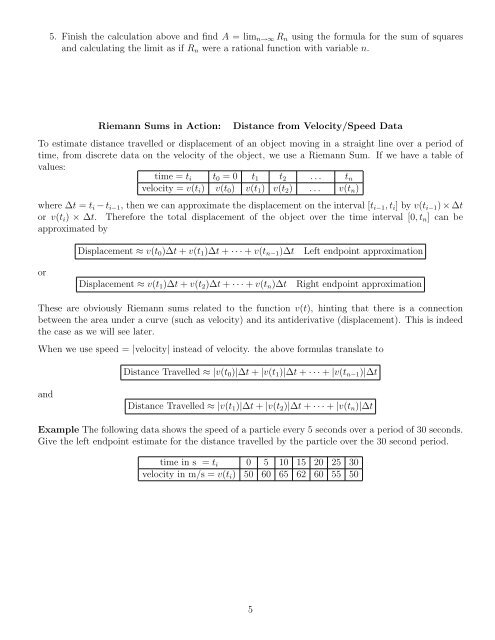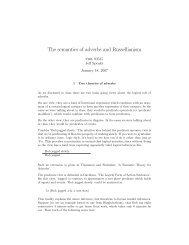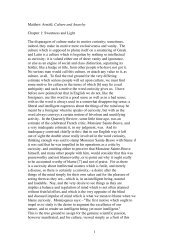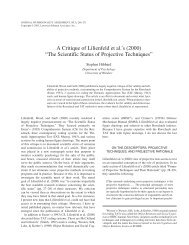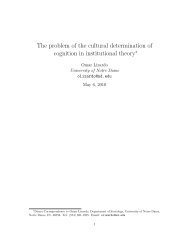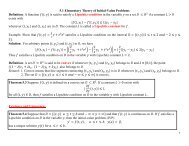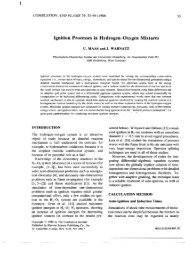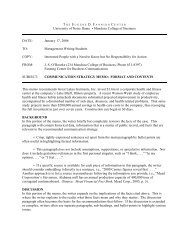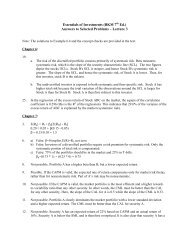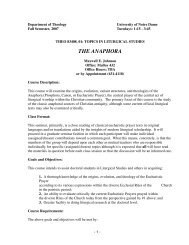Left endpoint approximation
Left endpoint approximation
Left endpoint approximation
You also want an ePaper? Increase the reach of your titles
YUMPU automatically turns print PDFs into web optimized ePapers that Google loves.
5. Finish the calculation above and find A = limn→∞ Rn using the formula for the sum of squares<br />
and calculating the limit as if Rn were a rational function with variable n.<br />
Riemann Sums in Action: Distance from Velocity/Speed Data<br />
To estimate distance travelled or displacement of an object moving in a straight line over a period of<br />
time, from discrete data on the velocity of the object, we use a Riemann Sum. If we have a table of<br />
values:<br />
time = ti t0 = 0 t1 t2 . . . tn<br />
velocity = v(ti) v(t0) v(t1) v(t2) . . . v(tn)<br />
where ∆t = ti − ti−1, then we can approximate the displacement on the interval [ti−1, ti] by v(ti−1) × ∆t<br />
or v(ti) × ∆t. Therefore the total displacement of the object over the time interval [0, tn] can be<br />
approximated by<br />
or<br />
Displacement ≈ v(t0)∆t + v(t1)∆t + · · · + v(tn−1)∆t <strong>Left</strong> <strong>endpoint</strong> <strong>approximation</strong><br />
Displacement ≈ v(t1)∆t + v(t2)∆t + · · · + v(tn)∆t Right <strong>endpoint</strong> <strong>approximation</strong><br />
These are obviously Riemann sums related to the function v(t), hinting that there is a connection<br />
between the area under a curve (such as velocity) and its antiderivative (displacement). This is indeed<br />
the case as we will see later.<br />
When we use speed = |velocity| instead of velocity. the above formulas translate to<br />
and<br />
Distance Travelled ≈ |v(t0)|∆t + |v(t1)|∆t + · · · + |v(tn−1)|∆t<br />
Distance Travelled ≈ |v(t1)|∆t + |v(t2)|∆t + · · · + |v(tn)|∆t<br />
Example The following data shows the speed of a particle every 5 seconds over a period of 30 seconds.<br />
Give the left <strong>endpoint</strong> estimate for the distance travelled by the particle over the 30 second period.<br />
time in s = ti 0 5 10 15 20 25 30<br />
velocity in m/s = v(ti) 50 60 65 62 60 55 50<br />
5


